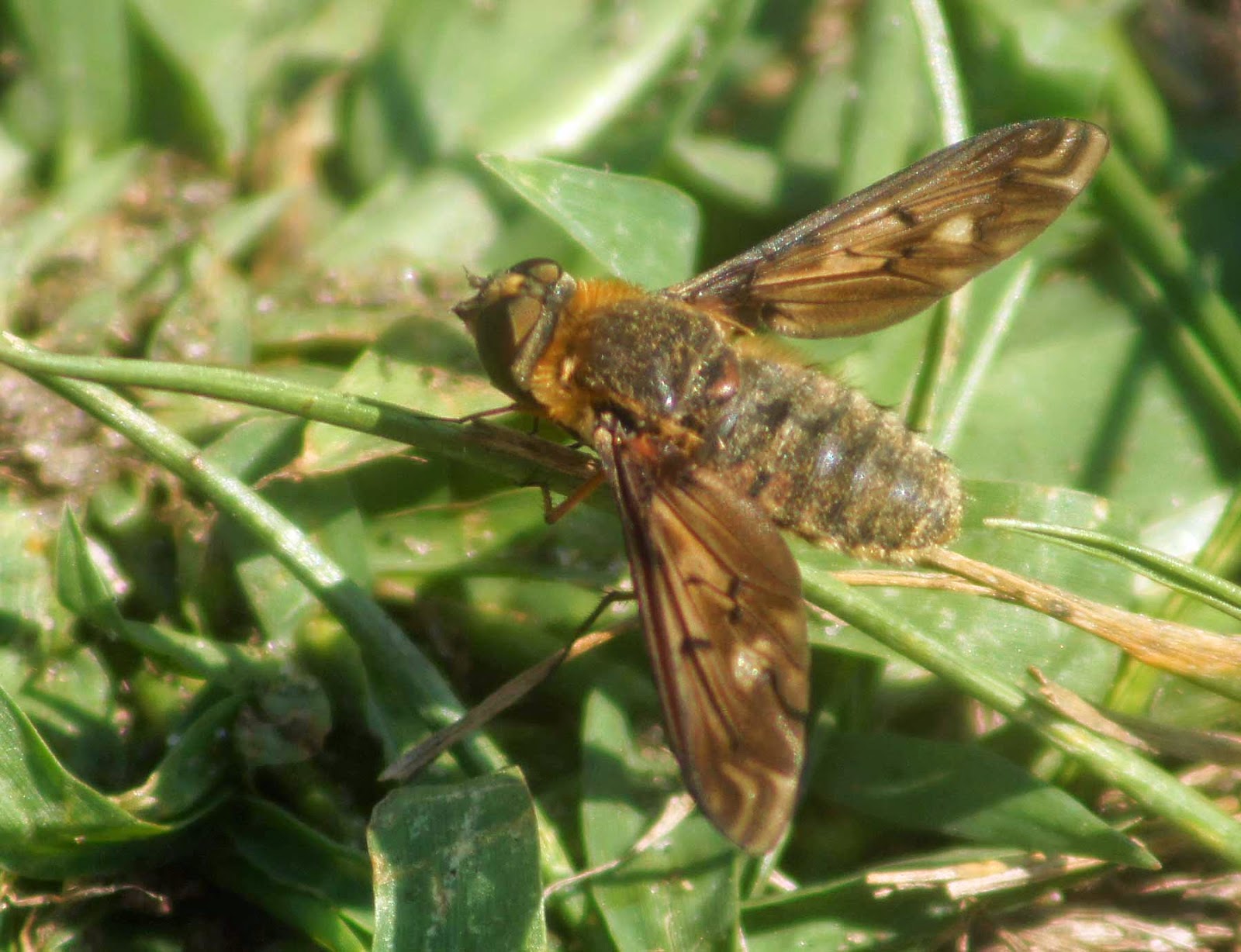 |
| Trichodes nuttali, Illinois Beach SP, Lake Co, IL, 6/29/2014 |
.jpg) | |
| Enoclerus analis, Lyons Woods FP, Lake Co, IL 7/30/2013 |
.jpg) |
| Thanasimus dubius, Lyons Woods FP, Lake Co, IL 6/2/2014 |
These are all Checkered Beetles, in the family Cleridae. The family is a small one, only 3600 species worldwide, with only 300 or so in North America. (That's about 1% of the 350,000 species of beetle worldwide*, and about 0.1% of the 25,000 beetles recorded from North America.)
They're predators, eating other insects. The larvae often feed on wood-boring larvae, including those of Pine Bark Beetles responsible for quite a few large-scale losses of trees in the western and south-eastern US. Which explains why this little tiny family still warrants over 5,000 citations on Google Scholar.
Interestingly, they use the sex pheromones of their prey to find them. The technical term for this is a kairomone, which is a chemical produced by one species that ends up benefiting another species. Herms, et al. looked at this in the predator-prey pair Ips pini (a bark beetle) and Thanasimus dubius (the last Clerid shown above). (1) Billings & Cameron showed that different predatory beetles respond to different genera of pine bark beetles, an interesting bit of specialization. (2) (They also showed that pine sawyer beetles, Monochamus titillator, responded to one of the bark beetles. Given their habit of laying eggs in freshly dead pine trees, this makes sense. They only responded to one species of beetle, though, which leads me to wonder if that beetle is more lethal to the pines, or if both the bark beetle and the sawyer beetle show preferences for certain species of pine.)
Beetles can be surprisingly attractive little critters, but it shouldn't surprise me by now just how intriguing their lives can be.
*All of these figures from Bugguide.net.
(1) Herms, D. A., Haack, R.
A., & Ayres, B. D. (1991). Variation in semiochemical-mediated
prey-predator interaction: Ips pini (Scolytidae) andThanasimus dubius
(Cleridae). Journal of chemical ecology, 17(8), 1705-1714.
(2) Billings, R. F., & Cameron, R.S. (1984). Kairomonal responses of Coleoptera, Monochamus
titillator (Cerambycidae), Thanasimus dubius (Cleridae), and Temnochila
virescens (Trogositidae), to behavioral chemicals of southern pine bark
beetles (Coleoptera: Scolytidae). Environmental Entomology, 13(6), 1542-1548.

.jpg)








.jpg)
.jpg)





.jpg)
.jpg)





















.jpg)





